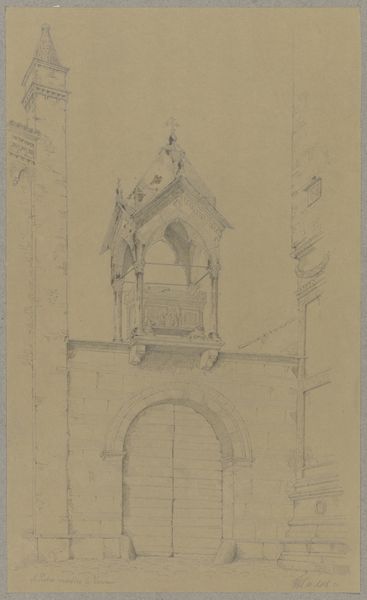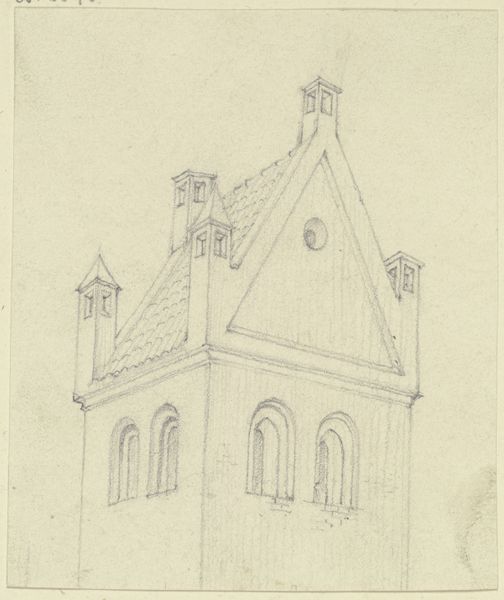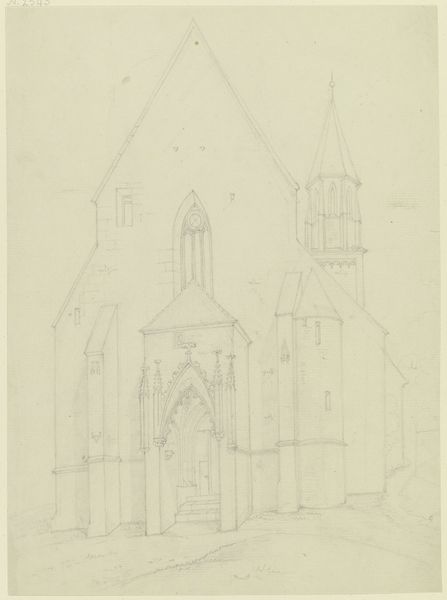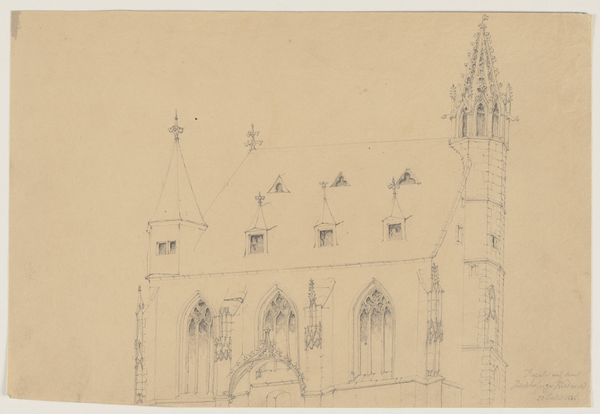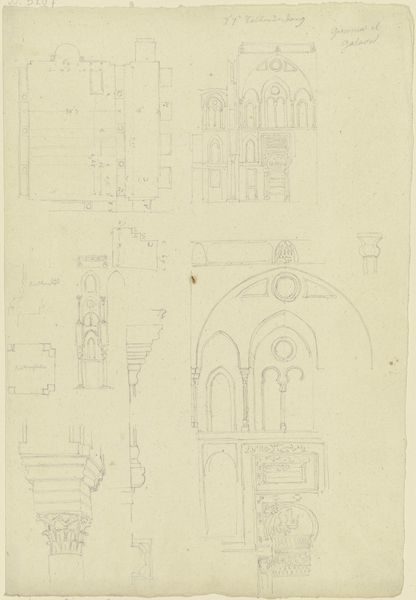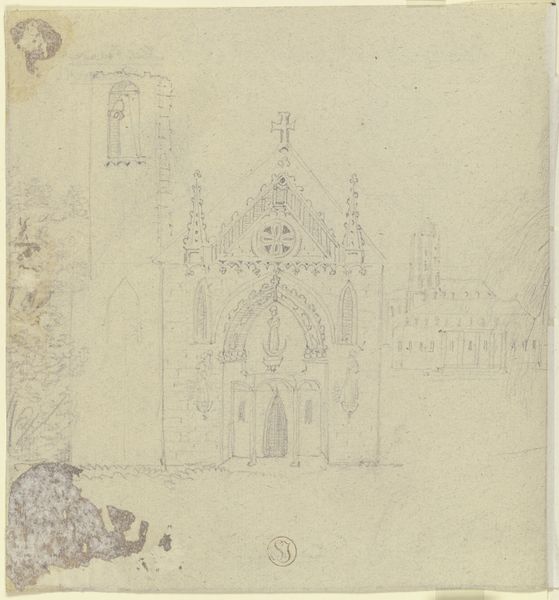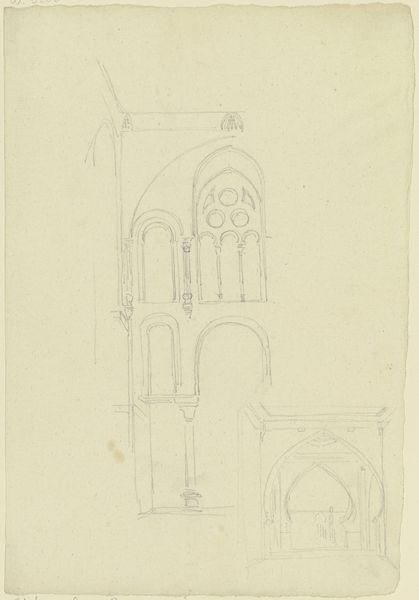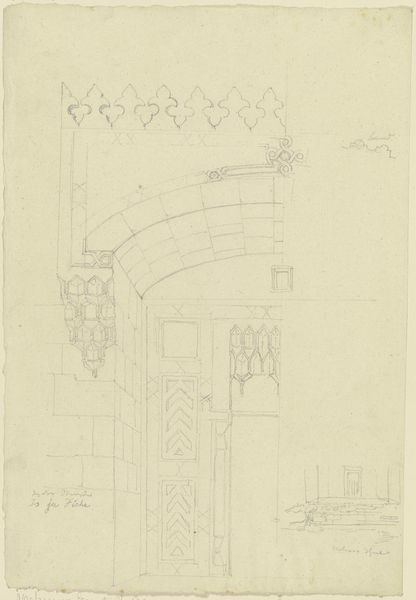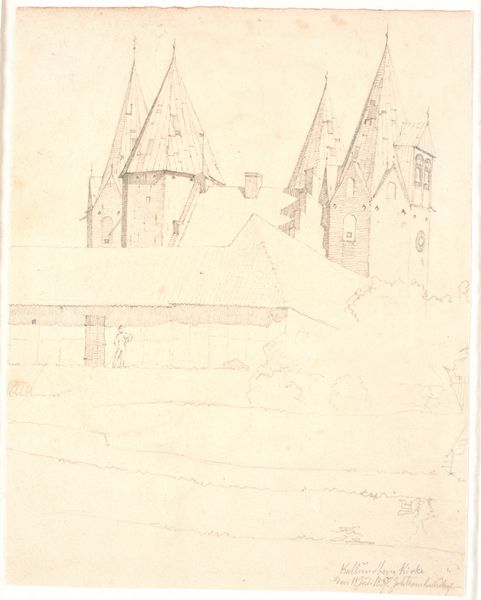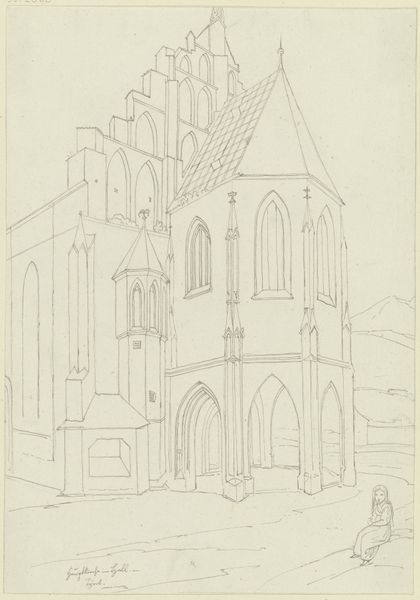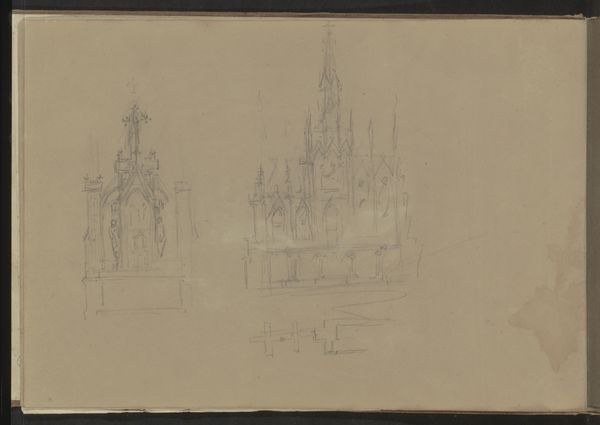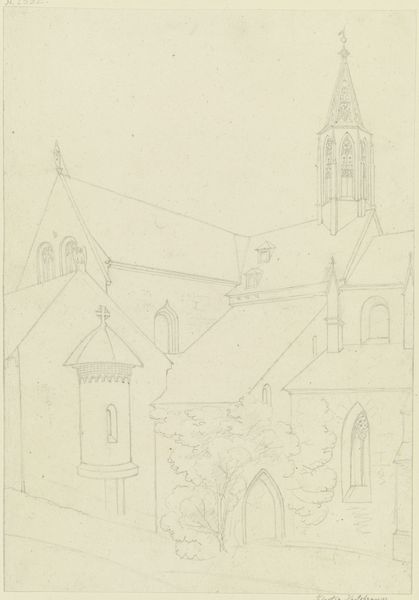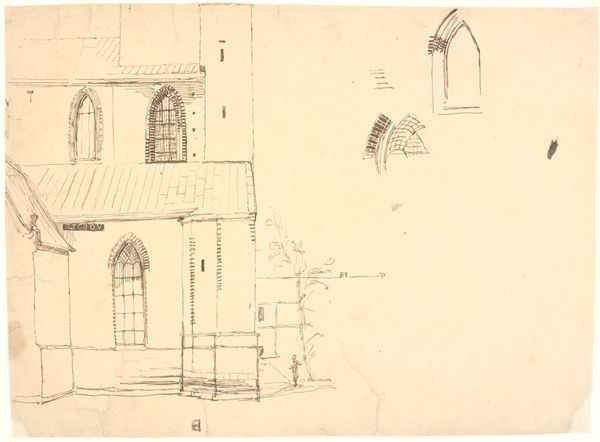
drawing, pencil, architecture
#
drawing
#
16_19th-century
#
sketch book
#
german
#
pencil
#
architecture
Copyright: Public Domain
Friedrich Wilhelm Ludwig sketched "S. Nazaro e Celso in Verona" using graphite. The drawing presents a symmetrical facade, methodically structured with a central rose window and pointed arches. The linear precision captures an almost mathematical rendering of architectural form. Consider the implications of this deliberate symmetry. It is not merely representational. Ludwig employs geometric regularity as a signifier, alluding to enduring and rational order. The church façade becomes a tableau where form embodies meaning. The sketch invites us to reflect on the relationship between architectural space and human understanding. How does Ludwig’s structured depiction influence our interpretation of the church’s cultural and spiritual role? Does it reinforce traditional values, or does it offer a commentary on the formal conventions of religious architecture? Ludwig's graphite lines on paper is not just a depiction of a building, but an exploration of space, form, and meaning that resonates with the intellectual inquiries of its time.
Comments
No comments
Be the first to comment and join the conversation on the ultimate creative platform.
